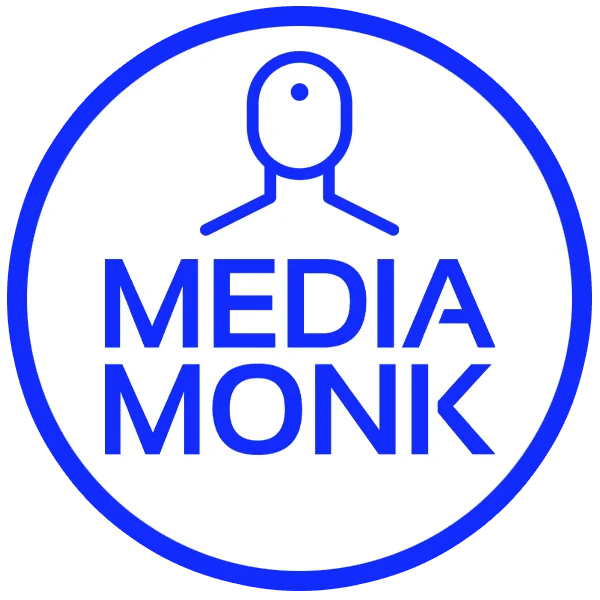Table of Contents
In the dynamic world of digital marketing, having a structured approach is crucial for success. This is where a comprehensive Content Marketing Checklist becomes an indispensable tool, guiding businesses through the multifaceted landscape of online branding and audience engagement. Whether you’re a seasoned marketer fine-tuning your strategy or a newcomer setting out on your digital journey, this checklist serves as a roadmap, outlining key steps and best practices to elevate your content marketing game.
The essence of a successful content marketing strategy lies in its execution, and that’s precisely what this Content Marketing Checklist aims to streamline. It covers everything from establishing a strong online presence with an optimized website to engaging your audience through various digital channels like blogs and social media. This checklist is designed not just as a to-do list, but as a strategic guide to ensure that every aspect of your content marketing efforts is aligned with your business objectives, audience needs, and the ever-evolving digital marketing trends. Let’s dive into the elements that constitute the backbone of an effective content marketing strategy.
At Media Monk, we strongly believe that a successful content marketing strategy must include the following tools for maximum impact.
You’ve Got to Have a Performance-driven Website
- Your website acts as the central hub for your digital presence.
- Produce Content, and post it to your website first.
- Use the link to the posts as the Canonical URL for anywhere else you’re going to post the same content, for instance, on a secondary blog or when making a guest post on another blog.
- WordPress is user-friendly, SEO-optimized, and offers extensive customization.
- Best of all, Media Monk has a deep integration with this platform that drives close to 43% of the internet.
- Media Monk also supports websites hosted on WIX.com
Off-site Blogs (e.g. WordPress.com, Medium, Blogger or WIX)
BEWARE: Posting the same content on both your website and high-ranking platforms like Medium or WordPress.com can be a double-edged sword due to the complexities of duplicate content in SEO. While these platforms have high domain authority that can give your content more visibility, simply duplicating content from your website onto these platforms might not always benefit your site’s SEO directly.
Here’s a breakdown of the potential benefits and considerations:
- Increased Visibility and Reach: Posting on Medium or WordPress.com exposes your content to their broader audience, which can be significantly larger than your website’s current reach. This can be particularly beneficial for brand awareness and attracting new readers who might not have discovered your content otherwise.
- Potential for Referral Traffic: If your posts on these platforms include links back to your website, they can drive referral traffic. This can be a useful strategy, especially if the content on these platforms serves as a teaser or introduction, encouraging readers to visit your website for more in-depth information.
- Concerns with Duplicate Content: Search engines, particularly Google, try to filter out duplicate content in search results. If the same content appears in multiple places, the search engine will typically show only one version. This might mean that your original content on your website gets less visibility if the version on a high-authority domain like Medium ranks higher.
- No Direct SEO Boost to Your Website: The high domain authority of Medium and WordPress.com does not directly transfer to your website through duplicate content. The benefit lies more in the potential for increased exposure and referral traffic rather than a direct SEO boost.
To mitigate this, consider creating unique introductory paragraphs for posts on Medium or WordPress.com that link back to the full content on your website. Alternatively, you could post a summary or an adapted version of the article on these platforms.
Media Monk’s Ingenious Off-Site Strategy

In the digital age, where content is king and SEO its throne, Media Monk introduces a revolutionary approach to content marketing that leverages the strengths of both your own website and high-ranking domains like Medium or WordPress.com. By creating unique, referring variations of your website’s content for these off-site blogs, Media Monk ingeniously sidesteps the pitfalls of duplicate content while boosting your site’s SEO. This strategy is akin to a masterful game of digital chess, where each move is calculated to enhance your website’s position in the vast online landscape.
Imagine this: each time you post an engaging, original article on your website, Media Monk crafts a complementary yet distinct piece for platforms like Medium. These pieces don’t just rehash your original content; they discuss it, reference it, and add new dimensions to it. It’s like having a network of billboards, each pointing towards your website, but with their own unique message. This approach not only maintains the integrity and uniqueness of your on-site content but also leverages the authority of these high-ranking external sites to direct traffic back to your website. It’s a symbiotic relationship where both your website and the off-site platforms benefit, creating a harmonious balance in your overall content strategy.
The result is a significant SEO boost for your website. Search engines value unique, quality content and the backlinks from these reputable platforms signal to search engines the credibility and relevance of your site. It’s a digital endorsement, enhancing your website’s visibility and search rankings. Furthermore, this strategy broadens your audience reach, exposing your brand to the diverse and extensive user bases of Medium or WordPress.com. In essence, Media Monk’s strategy is a modern-day alchemy, turning content into digital gold, driving traffic, increasing visibility, and solidifying your place in the competitive online realm.
Here are 10 reasons why this Media Monk’s strategy is better
- Innovative Content Strategy: Media Monk creates unique, referring variations of website content for high-ranking domains like Medium and WordPress.com.
- Avoidance of Duplicate Content: The content crafted for off-site blogs is entirely unique, discussing and referencing the original content on the website, thus eliminating issues related to duplicate content.
- SEO Enhancement: This approach provides a significant SEO boost to the website by leveraging the authority of high-ranking external platforms to create quality backlinks.
- Unique Messaging for Each Platform: Each piece on external platforms is distinct, adding new perspectives to the original content while directing traffic back to the website.
- Synergistic Relationship: The strategy creates a symbiotic relationship between the website and off-site blogs, benefiting both through increased visibility and audience reach.
- Increased Website Visibility and Credibility: Backlinks from reputable platforms enhance the website’s credibility and visibility in search engine rankings.
- Broader Audience Reach: Leveraging platforms like Medium and WordPress.com exposes the brand to their extensive and diverse user bases.
- Digital Endorsement: The strategy acts as a digital endorsement, signaling search engines about the relevance and credibility of the website’s content.
- Traffic Driving: Unique content variations on external platforms drive traffic back to the main website, enhancing overall digital presence and audience engagement.
- Modern Content Marketing Alchemy: Media Monk’s strategy is likened to modern-day alchemy, transforming content into valuable assets for digital marketing success.
Social Media Accounts
In the context of a comprehensive Content Marketing Checklist, one crucial aspect stands out: the active engagement with your audience and promotion of your content through social media platforms. In today’s digital-first world, platforms such as Facebook, Instagram, LinkedIn, and Twitter are not just channels for broadcasting messages; they are dynamic arenas for two-way communication with your target audience. By focusing your efforts on these platforms, you directly tap into the pulse of your audience’s online activity.
Each platform caters to a unique demographic and serves different purposes. For instance, Facebook and Instagram are excellent for visual storytelling and reaching a broad consumer base, while LinkedIn is ideal for professional networking and B2B marketing. Twitter, with its fast-paced nature, is perfect for real-time engagement and building brand personality. By strategically choosing and focusing on the platforms where your target audience is most active, you can tailor your content to fit the unique nature and preferences of each audience segment. This approach not only enhances your content’s visibility but also fosters meaningful interactions, turning passive viewers into active participants and brand advocates. Remember, in content marketing, it’s not just about where you tell your story, but also about how and to whom you tell it.
- Essential for engaging directly with your audience and promoting content.
- Focus on platforms where your target audience is most active (e.g., Facebook, Instagram, LinkedIn, Twitter).
- When you set up your Brand in Media Monk, it will tell you which platforms are likely to perform best for your brand based on the AI audience profile identified by the platform.
Good Hosting Infrastructure
In the realm of digital marketing, as outlined in the Content Marketing Checklist, the importance of a robust hosting infrastructure cannot be overstated. A good hosting infrastructure forms the backbone of your online presence, playing a pivotal role in ensuring that your website operates smoothly and efficiently. Two key features to consider in this infrastructure are object caching and SSL security, each addressing crucial aspects of website performance and security.
Object Caching for Enhanced Performance:
- Object caching is a technology that temporarily stores (or ‘caches’) data, reducing the time taken to retrieve information from the database.
- It’s like a memory bank for your website, storing frequently accessed elements like images, CSS files, and JavaScript. This means when a user visits your website, these elements load more quickly because they are fetched from the cache rather than the server, significantly improving the site’s speed and responsiveness.
- Faster website speed not only provides a better user experience but also positively impacts your SEO rankings, as search engines favor sites that load quickly.
SSL Security for Trust and Safety:
- SSL (Secure Sockets Layer) is a standard security technology that establishes an encrypted link between a web server and a browser.
- This encryption ensures that all data passed between the web server and browsers remain private and integral, safeguarding against data breaches and hacks.
- SSL security is easily identifiable through the ‘https’ and a padlock icon in the browser address bar, signaling to visitors that your site is secure and trustworthy.
- In an era where online security is paramount, SSL not only protects your site and its visitors but also enhances your brand’s credibility and trustworthiness.
By prioritizing these features in your hosting infrastructure, you ensure not just the operational excellence of your website but also build a foundation of trust and reliability with your audience. A website that is both fast and secure is more likely to retain visitors, encourage engagement, and convert leads, thereby playing a crucial role in the effectiveness of your overall content marketing strategy.
Basically:
- Ensures website reliability and speed.
- Look for features like object caching for performance and SSL security for trust and safety.
Optimize Images on your website
In today’s fast-paced digital world, where the speed and efficiency of your website significantly impact user experience and SEO, image optimization emerges as a crucial element in your Content Marketing Checklist. The adoption of advanced, web-optimized image formats like WebP and AVIF is not just a technical consideration; it’s a strategic move to enhance your website’s performance and user engagement.
Embracing WebP and AVIF for Enhanced Website Performance:
- WebP and AVIF are modern image formats that provide superior compression techniques. This means they can store high-quality images at significantly lower file sizes compared to traditional formats like JPEG or PNG.
- Picture a visually rich website that loads in a fraction of the time it used to. By using WebP or AVIF, you can offer an image-heavy site without the penalty of long load times. This is especially beneficial in retaining the increasingly impatient online audience, who are likely to leave a site that takes too long to load.
Advantages in SEO and User Experience:
- Smaller image file sizes directly contribute to faster page loading times, which is a key factor in user experience. A website that loads quickly is more likely to keep visitors engaged, reducing bounce rates and improving the chances of conversion.
- Search engines, notably Google, prioritize website loading speed as a ranking factor. By optimizing your images with WebP or AVIF, you’re not only enhancing user experience but also boosting your SEO efforts. It’s akin to hitting two birds with one stone – you get a visually appealing site that ranks higher in search results.
Incorporating WebP and AVIF into your website’s image optimization strategy signifies a commitment to cutting-edge technology and a user-first approach. This aspect of image optimization is integral in ensuring that your website not only looks good but also performs efficiently, contributing positively to your overall content marketing objectives.
A Good CDN (Content Delivery Network)
In the ever-evolving landscape of digital marketing, where speed and security are paramount, incorporating a Content Delivery Network (CDN) like Cloudflare is a critical component of your Content Marketing Checklist. A CDN is more than just a technical add-on; it’s a strategic asset that enhances the global performance and security of your website, pivotal for maintaining a competitive edge in the digital arena.
Boosting Global Performance with Cloudflare:
- A CDN like Cloudflare works by caching your website content in multiple data centers around the world. When a user accesses your site, the content is delivered from the nearest server location, significantly reducing loading times.
- Imagine your website as a global store with multiple branches; no matter where your customers are, they get a fast and seamless shopping experience. This is what Cloudflare does for your digital presence – ensuring that your content is quickly and reliably delivered to users, regardless of their geographic location.
Enhanced Security and Easy Integration:
- In addition to speed, Cloudflare provides robust security features. It protects your website against a range of threats, including DDoS attacks, malicious bots, and data breaches.
- Integrating Cloudflare with your website is a straightforward process, making it accessible even for those with limited technical expertise. Once integrated, it acts as a shield, safeguarding your digital presence while enhancing performance.
- Cloudflare’s popularity stems from this blend of easy integration and comprehensive security. By using Cloudflare, you’re not just speeding up your website; you’re also fortifying it against the increasing threats of the digital world.
Incorporating Cloudflare or a similar high-quality CDN into your content marketing strategy is essential for delivering a fast, reliable, and secure online experience to your audience. It’s an investment in the technical backbone of your digital marketing efforts, ensuring your website stands strong and swift in the competitive digital marketplace.
Setup Google Search Console & Connect it to your Website
Integrating Google Search Console into your Content Marketing Checklist is a strategic move that can significantly enhance your website’s visibility and performance in Google search results. Google Search Console isn’t just a tool; it’s a window into how Google views your website, offering invaluable insights that can shape your SEO and content marketing strategies.
Monitoring and Enhancing Website Performance:
- Google Search Console provides a comprehensive overview of how your website performs in Google Search. It offers data on search queries, the number of clicks per query, impressions, click-through rate (CTR), and the average position of your website in search results.
- Think of Google Search Console as a health monitor for your website in the realm of search engines. It allows you to understand which parts of your website are performing well and which areas need improvement. For example, if certain pages have a low CTR, you can analyze and optimize them for better performance.
Identifying and Addressing Issues for Optimized Search Visibility:
- Beyond performance metrics, Google Search Console is instrumental in identifying issues that might be hindering your website’s performance. This includes crawl errors, mobile usability issues, and security problems like hacking or malware.
- By regularly monitoring and addressing these issues, you ensure that your website remains in good health and is easily crawlable by Google. This is crucial for maintaining and improving your site’s visibility in search results. It’s like having a continuous SEO audit, where you can promptly rectify any problems that might impede your website’s search engine performance.
In summary, setting up Google Search Console is an essential step in your content marketing journey. It not only aids in fine-tuning your SEO efforts but also provides critical insights into user behavior and website performance, helping you craft a more effective content strategy. By leveraging the power of Google Search Console, you can ensure that your website not only reaches its target audience but also delivers the kind of performance that drives success in the digital world.
Integrate Google Analytics
Even though it is a complex tool, you’re going to need it to understand your website traffic and whether or not your content marketing strategy is working in your favour.
Incorporating Google Analytics into your Content Marketing Checklist is a crucial step towards gaining a deeper understanding of your website’s traffic and user behavior. This tool is not just a tracker; it’s a treasure trove of insights that can inform and refine your overall digital strategy, ensuring that every decision you make is backed by solid data.
Tracking and Understanding User Interaction:
- Google Analytics offers a detailed view of who is visiting your website, how they are getting there, and what they are doing once they arrive. It tracks various metrics such as page views, session duration, bounce rates, and user demographics (age, gender, location, etc.).
- Imagine Google Analytics as the dashboard of a car, providing real-time data on how your vehicle (website) is performing on various terrains (digital channels). It helps you understand which pages or content are most engaging, where your traffic is coming from (search engines, social media, direct visits), and how users interact with your site. This information is invaluable for understanding the effectiveness of your content and for identifying areas for improvement.
Data-Driven Decision Making and Strategy Refinement:
- The insights provided by Google Analytics are essential for making informed decisions about your content marketing strategy. It allows you to see what types of content resonate with your audience, which marketing campaigns are most effective, and how to optimize the user experience on your site.
- Using this data, you can refine your approach, focusing your efforts on what works best. For example, if you find that a particular type of blog post drives a lot of traffic and engagement, you can prioritize creating similar content. Similarly, if certain traffic sources are proving more fruitful than others, you can adjust your marketing efforts to capitalize on these channels.
In summary, Google Analytics is an indispensable tool in your content marketing arsenal. It provides a clear and comprehensive picture of your website’s performance, empowering you with the knowledge to make strategic decisions. By harnessing the power of Google Analytics, you ensure that your content marketing efforts are not just guesses but are strategic moves that align with your audience’s preferences and behaviours, driving your digital success.
Deploy a Keyword Strategy
Integrating a robust keyword strategy into your Content Marketing Checklist is fundamental for achieving SEO success, and utilizing Media Monk’s Keyword Ideas tool and Idea Generator can significantly streamline this process. Keywords are the compass that guides your content to meet your audience’s search queries and needs, playing a critical role in enhancing your website’s visibility and relevance in search engines.
Utilizing Keywords for Targeted SEO:
- The incorporation of LSI (Latent Semantic Indexing) Keywords, Long Tail Keywords, and Search Intent Keywords is crucial in modern SEO. LSI Keywords help in enhancing the semantic relevance of your content, ensuring that it aligns with the context and nuances of user searches. They act like supporting actors in a play, enriching the main theme and providing a comprehensive understanding of the subject matter.
- Long Tail Keywords, on the other hand, are more specific and often less competitive. They target niche queries, making it easier for your content to rank higher for these specific terms. It’s like fishing in a pond with fewer competitors, increasing your chances of catching a fish.
Understanding and Responding to Audience Queries:
- To truly resonate with your audience, it’s essential to understand what they are searching for. Media Monk’s Idea Generator can be an invaluable tool in this regard. It analyzes search trends and patterns, providing insights into the types of questions and topics your audience is interested in.
- By crafting content that addresses these queries, you establish your website as an authoritative source of information. It’s akin to being a knowledgeable guide in a vast landscape of information; by answering the specific questions your audience is asking, you guide them to your website, where they find the answers they seek.
In essence, a well-thought-out keyword strategy, bolstered by tools like Media Monk’s Keyword Ideas tool and Idea Generator, is not just about driving traffic; it’s about attracting the right audience with the right content. It ensures that your content marketing efforts are aligned with user intent and search trends, thereby establishing your website’s authority and relevance in your industry’s digital space.
Be Mentally Prepared That You Need To Produce a Lot of Content
Embracing the mantra of ‘content is king’ in today’s digital landscape, the inclusion of a prolific content creation strategy in your Content Marketing Checklist is imperative. The digital world thrives on consistent, high-quality content, which is a crucial factor for both engaging your audience and enhancing your SEO efforts. This isn’t just about creating content; it’s about establishing a rhythm of regular, impactful communication with your audience.
Emphasis on Consistency and Quality:
- The digital space is akin to a continuously evolving narrative, where regular content updates keep the story fresh and engaging. Consistent content production ensures that your audience has something new and valuable to interact with each time they visit your platforms. This consistency not only helps in building a loyal audience base but also signals to search engines that your website is a current and relevant source of information, which can boost your SEO rankings.
- Quality is equally important. In a sea of information, high-quality content stands out and captures the attention of both users and search engines. This involves not just well-researched and informative content, but also content that is engaging, visually appealing, and aligned with your audience’s interests and needs.
Strategic Planning for Content Creation:
- To maintain a steady stream of content, strategic planning is crucial. This involves developing a content calendar, brainstorming topics that resonate with your audience, and scheduling content for optimal impact.
- Regular content creation can be a demanding task, but tools like Media Monk can streamline this process, offering resources for content ideation, creation, and scheduling. Utilize these tools to create a diverse mix of content, from blog posts and articles to social media updates and videos, ensuring that your content strategy remains dynamic and adaptable to changing audience preferences and digital trends.
Incorporating a well-planned, consistent, and quality-focused content creation strategy is a key pillar of effective content marketing. It’s about crafting a narrative that not only informs and engages your audience but also continually evolves to keep pace with the ever-changing digital landscape, thus ensuring your brand’s voice remains prominent and influential in the crowded digital space.
How much content is enough?
- There’s no one-size-fits-all answer; it depends on your industry, competition, and audience needs.
- Start with regular posts (e.g., 1-2 blog posts per week) and adjust based on engagement and resources.
By focusing on these essentials, you can build a robust foundation for your content marketing efforts. Each element plays a critical role in attracting and retaining your audience, boosting your SEO, and establishing your brand’s digital presence.








